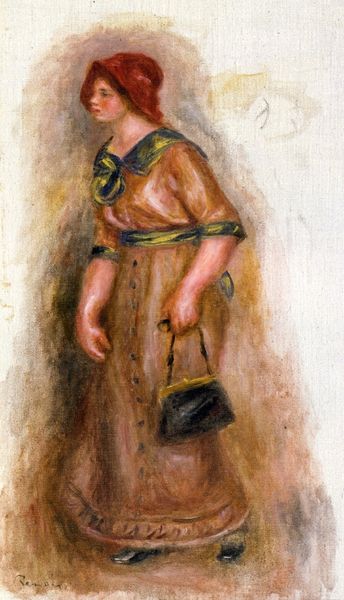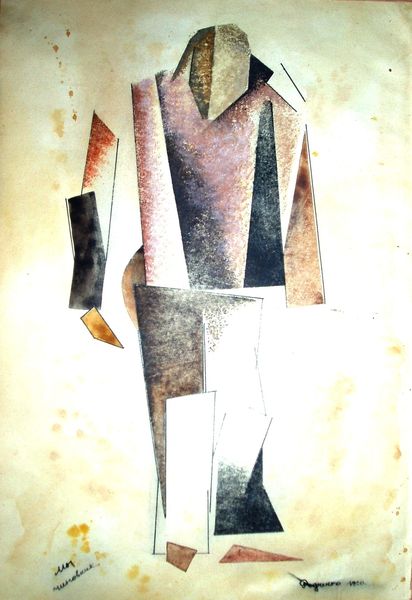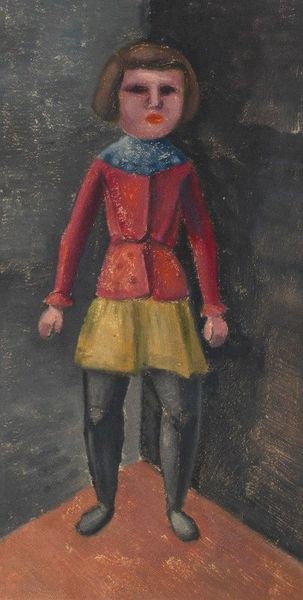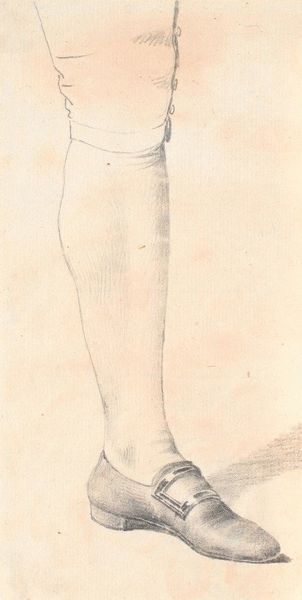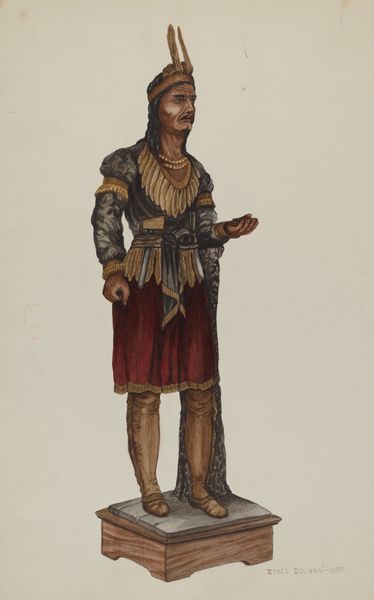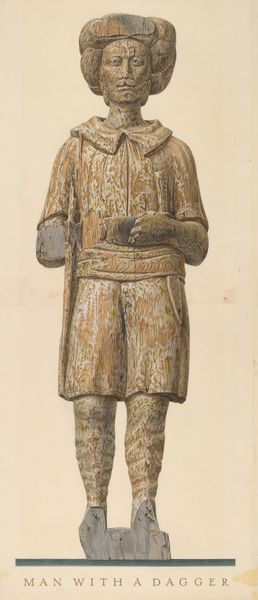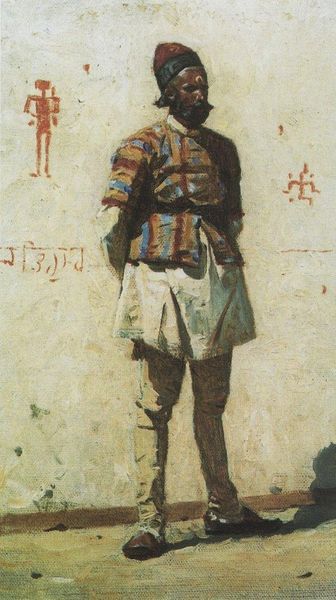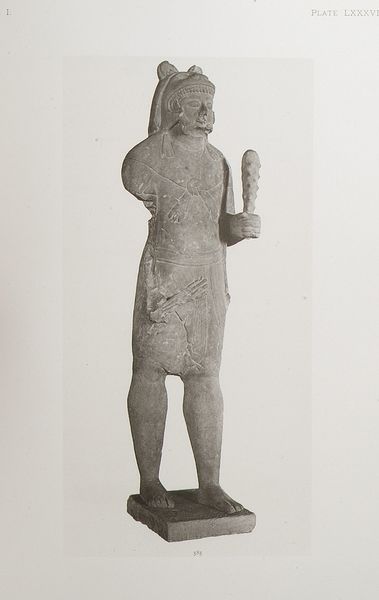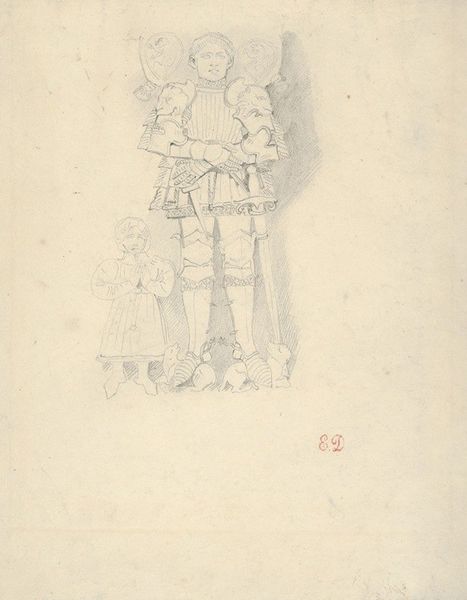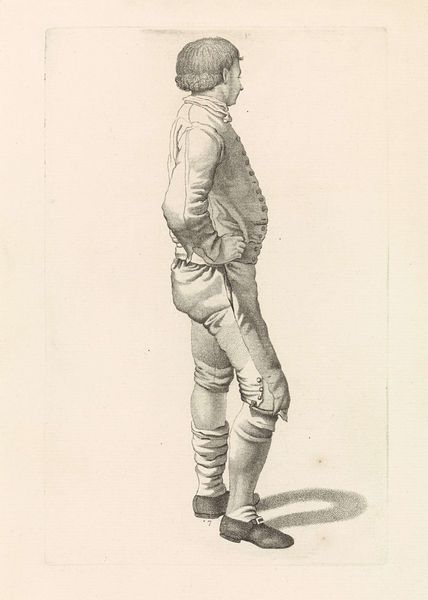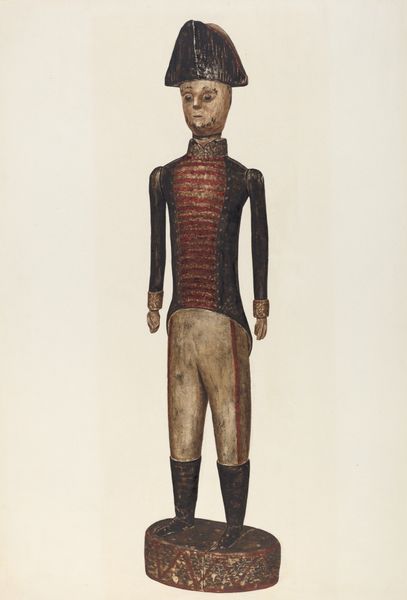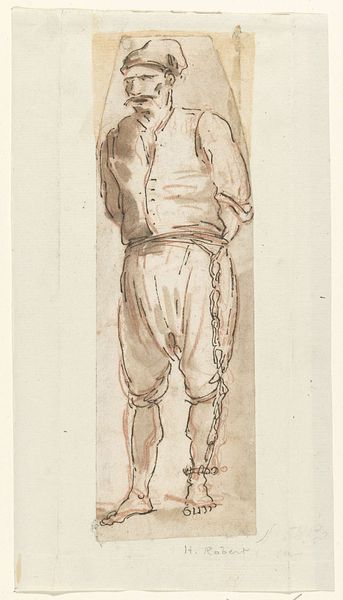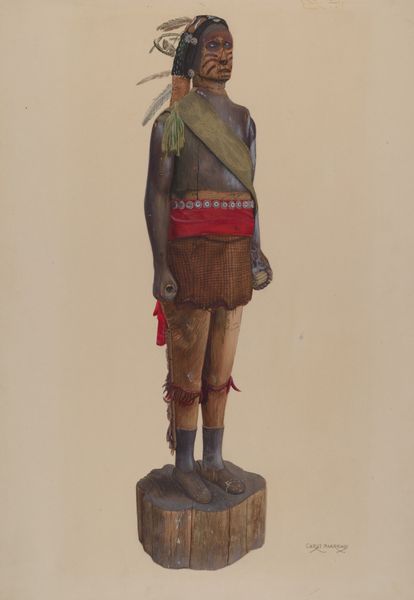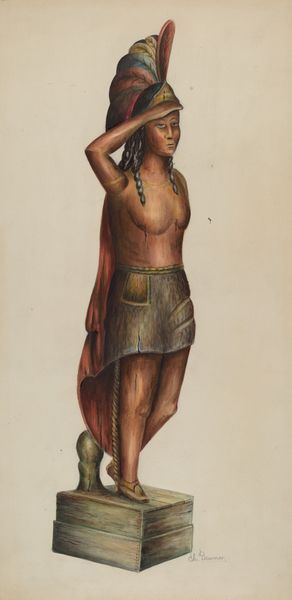
Copyright: Public Domain: Artvee
Curator: Immediately I sense a certain melancholic defiance from the figure in "Standing Soldier with Folded Arms". Editor: Indeed. Ladislav Mednyánszky rendered this soldier, sometime between 1880 and 1910, with remarkable sensitivity using watercolor. He looks constrained doesn't he, confined within a space as well as what his duty commands of him. Curator: Absolutely. The soldier’s folded arms could be interpreted as a sign of resistance, maybe passive, but nonetheless indicative of the kind of internal struggle and psychological weight experienced by individuals enmeshed in oppressive systems. Considering Mednyánszky's penchant for depicting marginalized figures, I wonder about the soldier's potential disaffection with military service, class dynamics, or even ethnic tensions prevalent at the time. Editor: You’re right, that contextual backdrop is crucial. Mednyánszky was himself of noble heritage, but often portrayed the downtrodden: laborers, vagrants, soldiers, reflecting a wider socio-political shift in late 19th-century Europe as traditional power structures began to crumble. He found them in train stations or the streets - the forgotten or ignored - not exactly traditional subjects of art. The almost monochrome clothing really emphasizes the stark nature of the occupation. Curator: The Romantic spirit resonates strongly. Rather than glorifying warfare or military prowess, Mednyánszky seems to spotlight the humanity within the uniform, exploring themes of duty, identity, and personal sacrifice, questioning the societal pressures bearing down on him. Look at the contrast, for instance, with the somewhat playful design on his lower leg garments. Is that a subtle wink towards a folk heritage that sits somewhat uneasily with his other attire? Editor: The ambiguity is part of what makes this portrait so captivating. The watercolor technique only enhances the sense of transient emotionality, suggesting a state of being in flux. It isn't idealized heroism that Mednyánszky captured; it's the pensive moment. You begin to question his belonging, or indeed whether the traditional understanding of soldierly duty truly speaks to this figure's identity. Curator: Considering those complexities is a welcome path away from conventional representations of military might. Editor: Agreed, thinking about the political climate informs my reading so much more.
Comments
No comments
Be the first to comment and join the conversation on the ultimate creative platform.
